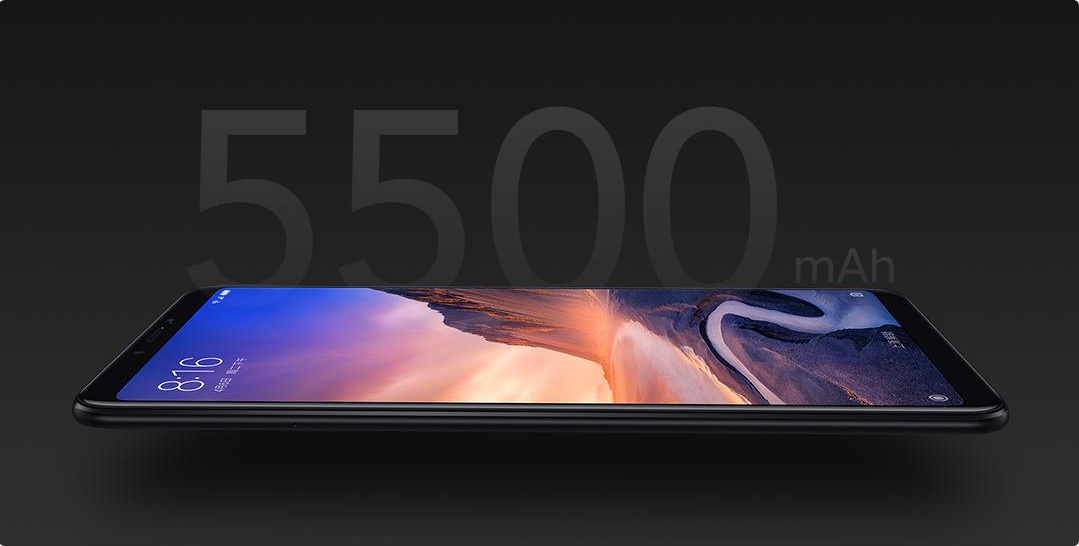
Remember when the race was on to see who could create the smallest phone in the world? Those days are long gone, and it’s no longer too difficult to find a phone that’s big enough to also double as a tea tray in times of need.
But those phones aren’t big enough for you — you want a truly massive phone. That’s where the Xiaomi Mi Max 3 comes in. With a tablet-sized 6.9-inch screen, the Mi Max 3 is the phone for anyone who really wants a phone bigger than their head. Here’s everything you need to know about the enormous Xiaomi Mi Max 3.
Design and display
First thing’s first — the Xiaomi Mi Max 3’s absolutely enormous display. It’s a 6.9-inch IPS LCD running a 2,160 x 1,080-pixel resolution in an 18:9 resolution. That gives it a pixels-per-inch measurement of 350, making it far from one of the sharpest phones we’ve ever seen, but it should be clear enough for most.
As you might expect, the body is big too, and the Mi Max 3 towers over even the Galaxy Note 8 by over half an inch in height — but thanks to a bezel-less design, it’s not quite approaching small tablet size in footprint. Slim bezels run up the sides of the phone, leading into a fairly slim forehead and chin. Not the slimmest we’ve seen, but not terrible for a midrange phone. The front-facing selfie camera can be found at the top, along with the phone’s earpiece. You’ll find a headphone jack at the top of the device, and a USB-C port at the bottom.
Flip the phone over and you’ll find a dual-lens camera system stacked vertically in the iPhone X-style. Unlike the iPhone though, you’ll also find a fingerprint sensor here, too, placed centrally fairly far up the back of the phone. We’ll have to see whether the extremely large size of the phone means that reaching the sensor will be a chore.
Specs and battery

Key Specs
- CPU: Qualcomm Snapdragon 636
- Memory: 4/6GB
- Storage: 64/128GB
- MicroSD storage: Up to 256GB
- Screen size: 6.9 inches
- Resolution: 2,160 x 1,080
- Connectivity: GSM/CDMA/LTE
- Battery: 5,500mAh
- Size: 176.2 x 87.4 x 8 mm
- Weight: 221 g (7.80 oz)
- Operating system: Android 8.1 Oreo (under MIUI 9.5)
Xiaomi’s Mi Max line has traditionally been a midrange offering, despite the size, and the Mi Max 3 is no different in that regard. It’s powered by a Snapdragon 636 processor — the same processor on the speedy Moto Z3 Play — and offers the choice between 4GB of RAM and 64GB of storage, or 6GB of RAM and a hefty 128GB of storage. While it’s unlikely to be the fastest phone on the block, it’s still likely to deliver good performance.
With those modest midrange specs you might be wondering what the large body of the Mi Max 3 is filled with. Turns out it’s full of extra battery. The Mi Max 3 is packing a massive 5,500mAh battery. Most modern flagships sit around a 3,000mAh battery, with some particularly large batteries hitting 4,000mAh — making the Mi Max 3’s battery utterly enormous. It’s also equipped with QuickCharge 3.0, and Xiaomi claims the battery will charge from empty to 71 percent in an hour.
Software and special features
The phone will ship with Android 8.1 Oreo, but it will be hidden under MIUI 9.5, the latest version of Xiaomi’s Android skin. MIUI isn’t a terrible re-skin of
There’s also going to be a raft of special features nestled in the Mi Max 3’s ample body, including A.I. scene recognition in the camera, facial unlocking, and a voice assistant.
Camera
There’s a decent camera suite attached to the Mi Max 3 as well. You’ll find a dual-lens system installed around the back, with a 12-megapixel main lens armed with an f/1.9 aperture. The secondary lens is just 5 megapixels, and will be used primarily for depth-sensing in portrait shots. The Mi Max 3 will apparently also be able to capture 4K video at 30 frames per second, and slow motion video at 120 frames per second, but only at 720p. The selfie shooter around the front will be an 8-megapixel lens with an f/1.7 aperture.
Release date and price
There’s no word on a release date yet, or even of a possible U.S. release. Xiaomi has been vocal about its desire to break into the U.S., so it’s possible this could be the phone to do so. The Xiaomi Mi Max 3 will be available in black, champagne gold, and blue.
Pricing has been revealed, and the 4GB/64GB model will cost 1,699 yuan (about $250), and the 6GB/64GB model will cost 1,999 yuan (around $300).
Editors' Recommendations
- The Mi Mix Fold is Xiaomi’s first foldable smartphone
- New Xiaomi Mi 10T Pro has a 108MP camera and a 144Hz screen to take on Samsung
- Xiaomi Mi 10 phones launch in China with Galaxy S20-baiting specs
- The Xiaomi Mi Mix Alpha with its ‘surround screen’ costs more than a Galaxy Fold
- Xiaomi confuses everyone with new Mi 9T Pro that isn’t really new at all




